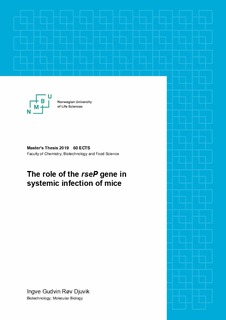| dc.description.abstract | The group of antimicrobial substances collectively known as antibiotics is humanity's foremost weapon against a range of pathogenic bacteria but is also getting increasingly compromised with the rise of antibiotic resistance. The bacteria Enterococcus faecalis and Enterococcus faecium are in particular responsible for many cases of resistance even against vancomycin, earning them the name vancomycin-resistant enterococci (VRE). A possible alternative to antibiotics is bacteriocins, peptide-based molecules that inhibit bacterial growth even at nanomolecular concentrations. While bacteria also have the ability to become resistant to bacteriocins, studies show bacteriocin resistance in E. faecalis and E. faecium is tied with decreased ability to survive environmental stress through the RseP metallopeptidase, suggesting there is a natural selective pressure against bacteriocin resistance. This suggests bacteriocin is a viable treatment against VRE.
Here, this hypothesis was tested on E. faecium by comparing E. faecium wild type strains with intact rseP, a gene encoding a protease known to act as bacteriocin receptor in E. faecalis, against bacteriocin resistant, rseP-mutated strains through in vitro and in vivo approaches. This was done by using E. faecium strains deriving from nosocomial infections to generate strains resistant to bacteriocin EntK1, creating 'pairs' of wild type and derived mutants strains to be compared. In vitro tests involved sequencing to determine rseP integrity, MIC assay resistance comparison between mutants and wild types, and stressor susceptibility tests as RseP is involved in bacterial stress response. In vivo tests involved injecting bacteria into laboratory mice to determine possible virulence difference which in theory could be correlated by in vivo immune system itself behaving as a stressor.
Sequencing revealed a subset of the resistant strains to hold mutations in rseP. Three rseP mutants and was chosen for further testing and confirmed more EntK1-resistant than their respective wild types by bacteriocin assay, however both in vitro stressor testing and in vivo virulence testing indicated little or no differences between wild type and mutant strains. The suggest E. faecium RseP mechanics differ from E. faecalis.
In addition, a whole-genome sequencing was performed on some bacteriocin resistant strains with no rseP mutations in order to determine other causes for resistance. Results indicate mutations in a bacterial pheromone maturation complex may be a factor by indirectly affecting RseP. | nb_NO |

